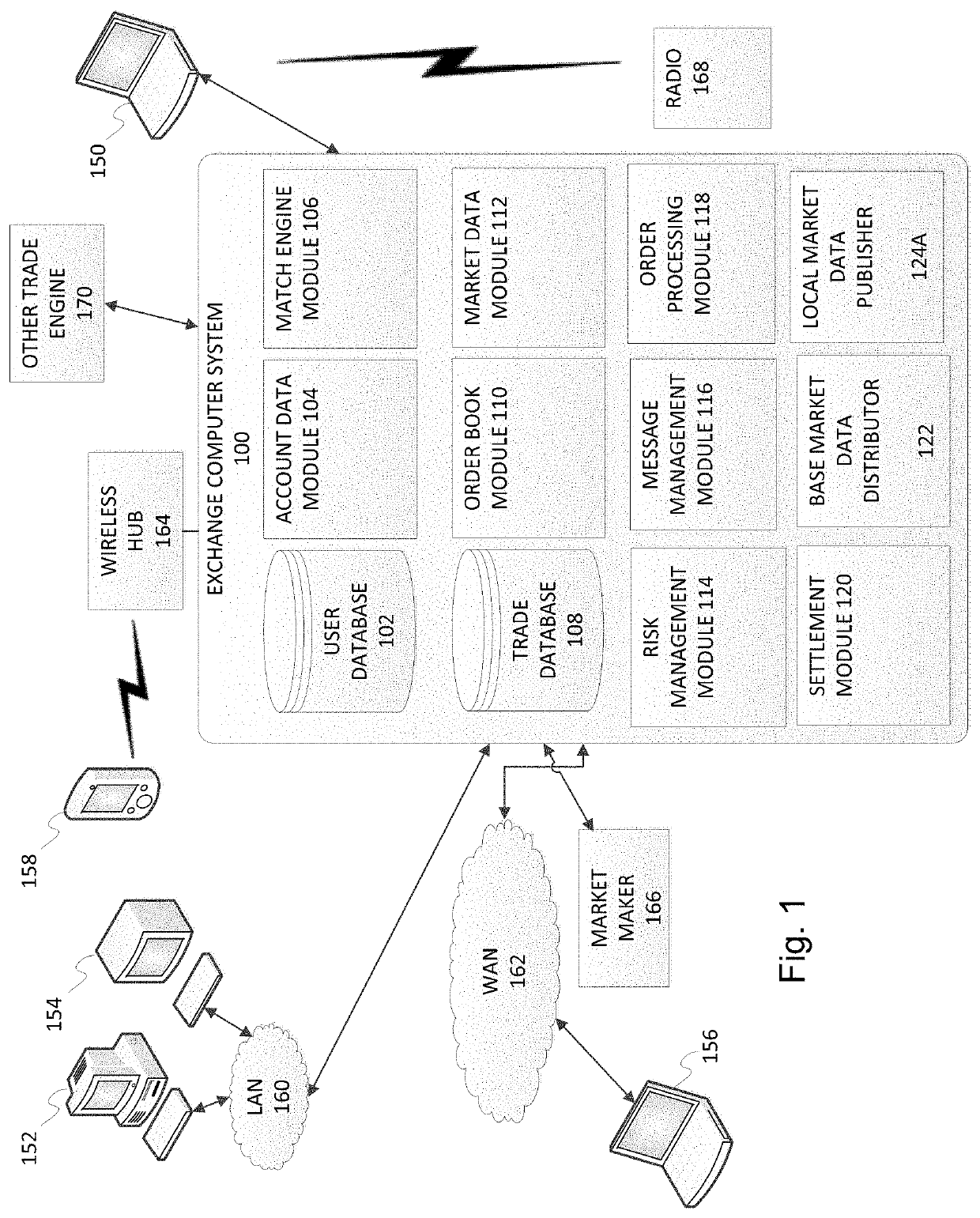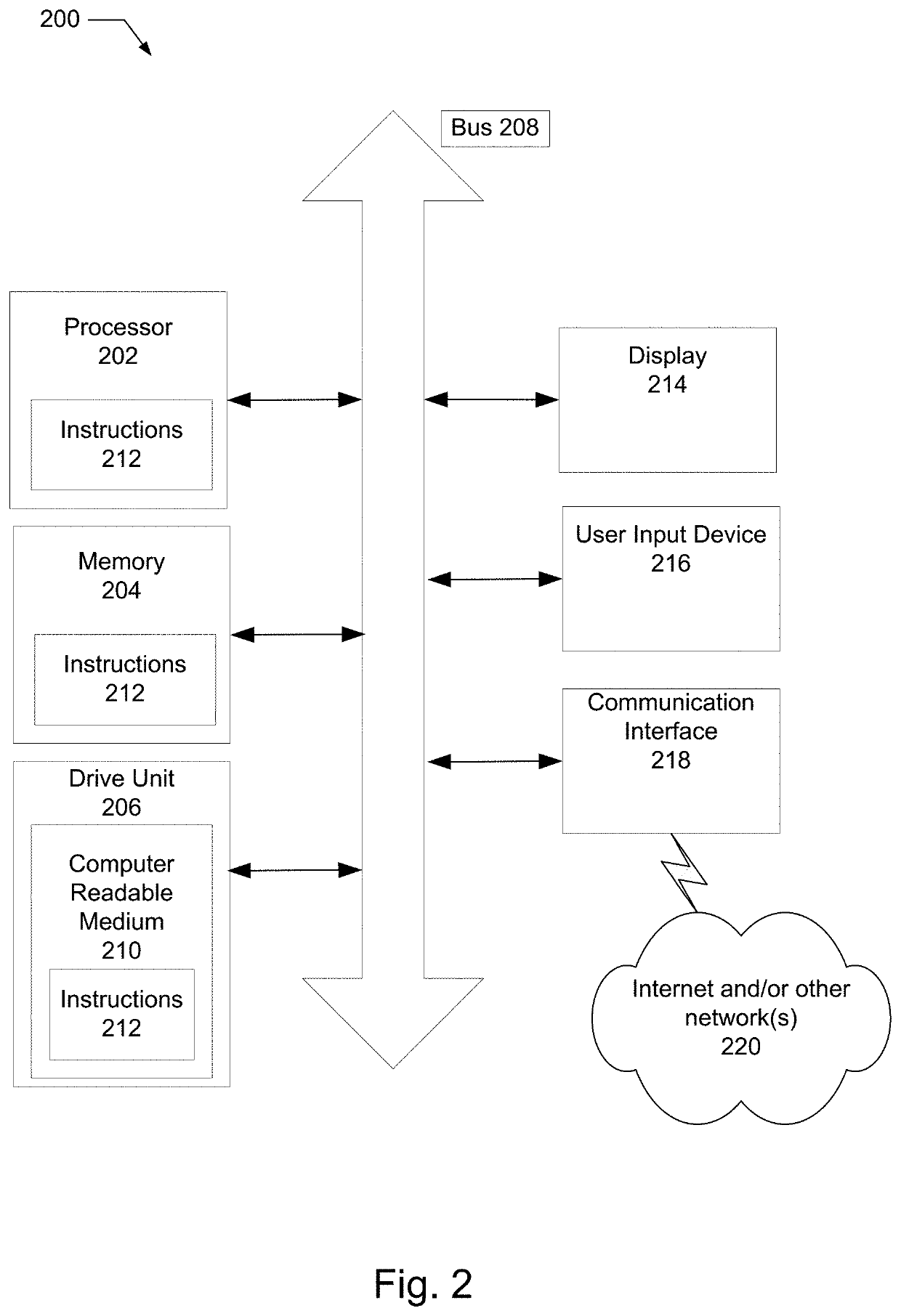That is, as with all economies of scale, high performance, e.g.,
high bandwidth and / or high speed, interconnections may be more difficult to implement and therefore rarer and more expensive than low performance, e.g., low bandwidth and / or
low speed connections, and are therefore typically only implemented where they provide the sufficient return on investment.
For
low volume communications, these costs may be negligible and generally incorporated into the fees that customers generally pay for access to the entire
wide area network, albeit typically subject to limitations such as bandwidth or speed caps.
However, those users which need to send a high volume of data and / or low latency data over the
wide area network may incur additional costs, particularly when sending a large volume of low latency data from one sub-network to another, e.g., from one geographic region to another.
However, enabling the trading of these types of instruments also adds complexity to the
electronic trading system as traders, trading OTC / bilateral or similar exchange traded instruments, still prefer or are required to transact only with counterparties with which they have a predefined credit relationship, e.g., a
counterparty for whom credit availability has been vetted.
It will be appreciated that additional conditions may be specified, such as a time or price limit, which may cause the order to be dropped or otherwise canceled and that such an event may result in another non-market-impacting communication instead.
In addition, what market
data messages get sent to which market participants, and in what form, may be subject to limits, restrictions or constraints imposed by the
electronic trading system.
Furthermore, as was described above,
electronic markets for bilateral and bilateral-like exchange traded instruments, like
interest rate swap contracts, may limit the availability of market data generated based on events caused by a particular
market participant to only those market participants which have a pre-defined credit relationship therewith.
Each tier may be associated with a different subscription cost based on the level of
delay, e.g., the closer to
real time transmission, the more expensive the subscription cost.
In addition, the
electronic trading system may implement restrictions or limitations on the transmission of particular messages to all or a subset of participants, such as embargoes, e.g., based on regulatory rules, etc., whereby the transmission of certain market
data messages must be delayed for all, or a subset of market participants, for a specified time period or until after the occurrence of a specified event, such as a release of a government or corporate report.
As will be appreciated, the possible variations in market data feeds due to system restrictions and / or recipient preferences can result in the electronic trading system having to transmit numerous unique market data streams to the various market participants which may consume significant communications network bandwidth.
As the market participants may be located in disparate
geographic regions, communicating all of the unique market data streams thereto may further require communicating a significant volume of data between regional sub-networks via high cost network interconnections.
The management and conveyance of electronic market
data messages over an electronic communications network is a technical implementation and problems therewith, such as excessive
bandwidth utilization or latency, are technical problems which can affect computer processes and systems which rely on those networks for operation.
As an intermediary to electronic trading transactions, the exchange bears a certain amount of risk in each transaction that takes place.
Additionally, the illustrations are merely representational and may not be drawn to scale.
 Login to View More
Login to View More  Login to View More
Login to View More 


